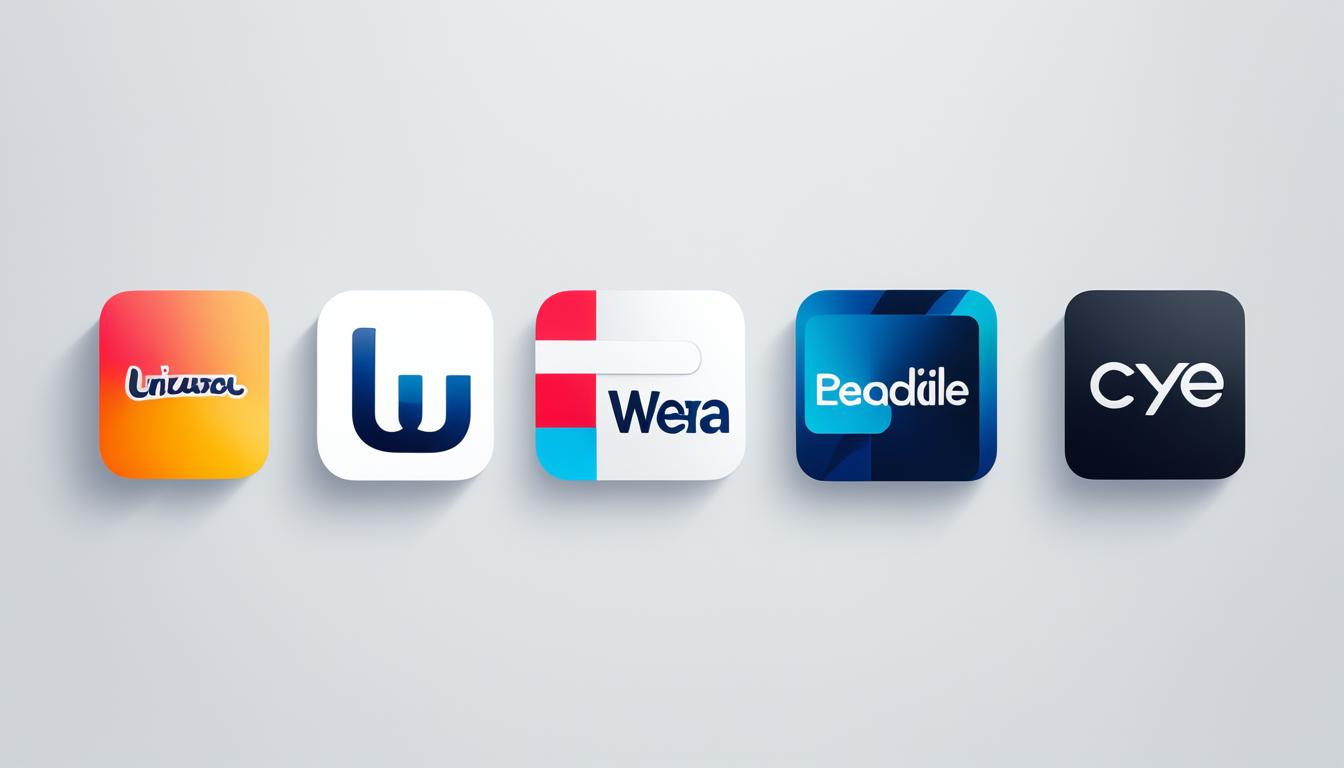
The significance of top mobile brands in the smartphone industry continues to grow as technology advances at a rapid pace. In today’s competitive landscape, leading smartphone companies such as Samsung and Apple dominate the market, but newer players like Xiaomi are challenging conventional norms with exceptional innovations and design strategies. In the first quarter of 2024, global smartphone shipments reached a remarkable 289.4 million units, showcasing a year-over-year increase of 7.8% and highlighting the vitality of this sector.
With Samsung capturing an impressive 20.8% market share by shipping 60.1 million units, it remains the reigning champion, while Apple closely follows suit at 17.3% with 50.1 million units. Xiaomi has marked itself as a rising contender with remarkable year-over-year growth of 33.8%, shipping 40.8 million units. This evolving landscape reflects how innovation and technology drive the smartphone industry forward, outlining the contributions of various brands and their positions in the market.
Key Takeaways
- Top mobile brands are crucial in shaping the smartphone landscape.
- Global smartphone shipments reached 289.4 million units in Q1 2024.
- Samsung leads the market with a share of 20.8% and 60.1 million units shipped.
- Xiaomi shows impressive growth, shipping 40.8 million units.
- Market dynamics are shifting as competition intensifies among leading brands.
Introduction to Leading Smartphone Companies
Leading smartphone companies play a pivotal role in shaping the landscape of mobile technology. The influence of these industry leaders extends beyond just product offerings; they redefine user experiences and drive mobile innovation. Among the prominent smartphone manufacturers, Apple and Samsung continually push boundaries, establishing benchmarks for quality and performance.
The mobile market has faced various dynamics. Recent data indicates that US smartphone shipments declined by 8% year-over-year in Q1 2024. This ongoing contraction suggests rising challenges for smartphone manufacturers, yet it also accentuates opportunities for growth through innovation. Notably, Apple’s market share remained stable at 52%, while Samsung achieved its highest market share in Q1 since 2020, climbing to 31%.
Despite the overall decrease in smartphone sales, key insights reveal how companies are adapting their market strategies. For instance, Apple experienced significant demand for the iPhone 15 Pro Max, securing its spot as a top seller. On the other hand, Samsung aimed to capture a broader customer base, catering to various demographics through diverse product lines.
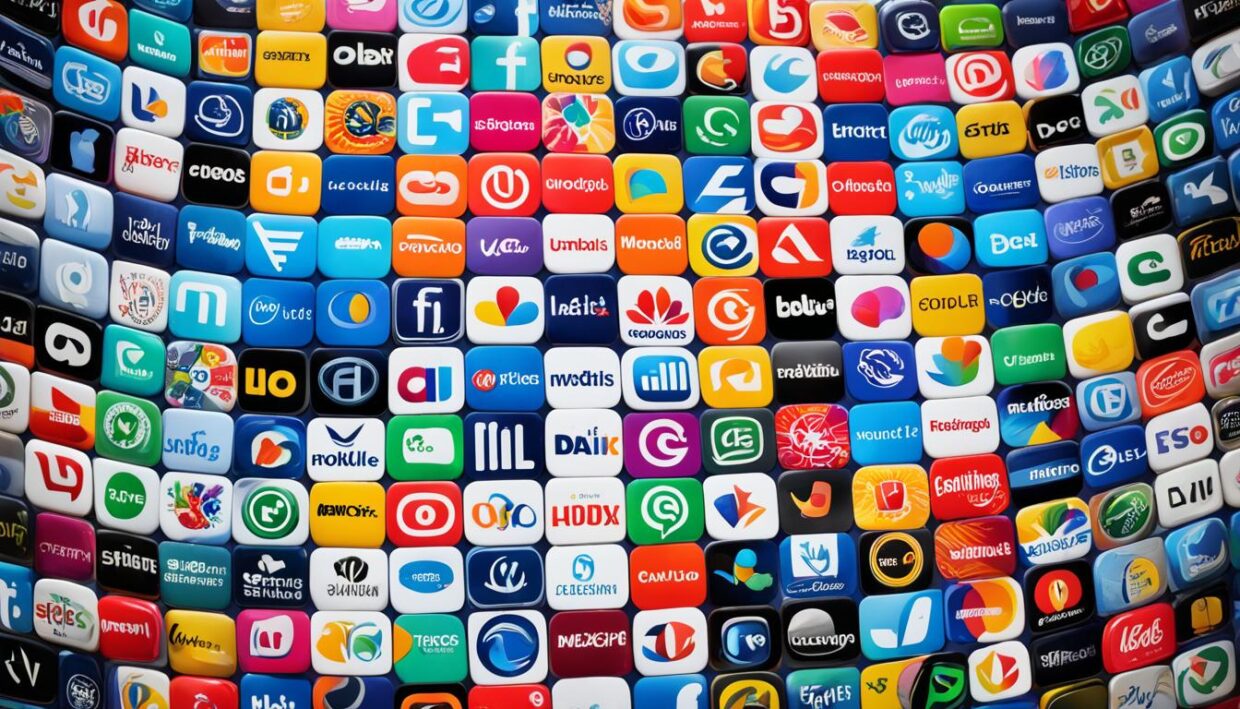
This evolving scenario not only illustrates the competitive landscape but also reflects the ongoing quest for technological advancements among industry leaders. As the smartphone sector continues to refine and expand its reach, consumers stand to benefit from a richer array of options tailored to their needs and preferences.
The Global Smartphone Market Landscape
The global smartphone market recently observed remarkable growth, with a notable 10% year-on-year increase in smartphone shipments. In the first quarter of 2024, manufacturers shipped approximately 296.2 million units, up from 269.8 million units in the previous year. Samsung continues to lead the industry, having shipped 60.0 million units, which represents a 20% market share. Apple followed closely behind with a 16% market share, shipping 48.7 million units.
Market trends indicate a significant shift as Xiaomi and TRANSSION demonstrate impressive growth, with year-on-year increases of 33% and 86%, respectively. Both companies are capitalizing on emerging markets, particularly in regions such as the Middle East, Africa, and Latin America. In Q1 2024, TRANSSION’s market presence climbed to 10%, showcasing its robust adaptability.
Samsung’s recent Galaxy S24 launch contributed to its overall success, resulting in a 35% year-over-year increase, with shipments reaching 13.5 million units. In contrast, Apple experienced a decline of 16% in shipments compared to Q1 2023, highlighting the increasingly competitive landscape in the global smartphone market.
To navigate this environment, vendors are advised to invest strategically in marketing and product development, particularly focusing on the widening price polarization trend. The growing divide between entry-level and premium models creates both challenges and opportunities. In summary, ongoing fluctuations in smartphone shipments and vital market trends indicate a continuously evolving global smartphone market.
| Manufacturer | Q1 2024 Shipments (Million Units) | Market Share (%) | Year-over-Year Growth (%) |
|---|---|---|---|
| Samsung | 60.0 | 20 | -2 |
| Apple | 48.7 | 16 | -16 |
| Xiaomi | 40.7 | 14 | 33 |
| TRANSSION | 28.6 | 10 | 86 |
| OPPO | 25.0 | 8 | -2 |
| Others | 93.2 | 31 | N/A |
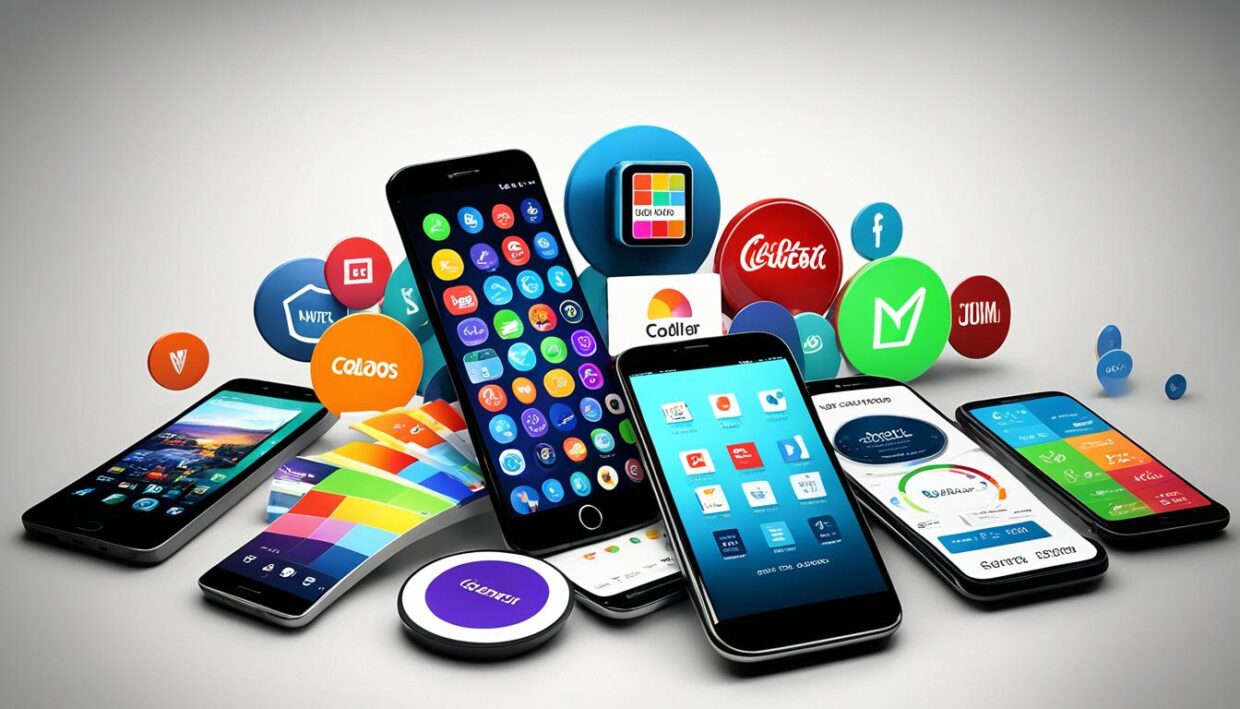
Samsung: The Reigning Champion
In the highly competitive smartphone market, Samsung continues to assert its dominance as the leading brand in 2024. With a Samsung market share of 20.8%, the company remains a significant player despite facing challenges from other major brands. This dominance results from strategic pricing, innovative features, and a commitment to customer satisfaction.
Market Share Dynamics in 2024
Samsung encountered fluctuations in its market position due to a double-digit slump in shipments, totaling around 226.6 million units. This decline allowed Apple to momentarily seize the top spot. Nevertheless, Samsung’s robust portfolio and brand loyalty help maintain a substantial share in the smartphone landscape. The competition remains fierce as low-end Android brands, like Xiaomi, rapidly expand their market presence, particularly in emerging markets.
Notable Innovations from Samsung
Samsung has consistently pushed the envelope with smartphone innovations, setting trends that resonate with consumers. The introduction of advanced camera technologies enhances photography experiences, while foldable devices showcase the company’s commitment to pushing the boundaries of design. These innovations affirm Samsung’s position as a trailblazer among leading brands, attracting both enthusiasts and casual users alike.

Apple: The Icon of Innovation
Apple continues to solidify its status as a leader in the smartphone market, boasting a significant 17.3% share in early 2024. Renowned for its unique approach to ecosystem integration, Apple smartphones showcase seamless performance, allowing users to enjoy a cohesive experience across devices. Recent iPhone updates have further enhanced this integration, bringing forth innovative features that enhance functionality and user satisfaction.
Performance and Ecosystem Integration
The strength of Apple smartphones lies in their exceptional performance, supported by robust hardware and sophisticated software. The company introduced Apple Intelligence, a personal intelligence system designed to transform interactions across devices, which deeply integrates with iOS 18, iPadOS 18, and macOS Sequoia. This system enables users to perform tasks such as recording, transcribing, and summarizing audio within apps like Notes and Phone, pushing the boundaries of productivity.
- Adaptive Audio in AirPods optimizes listening experiences
- The ability to locate a misplaced iPhone via Apple Watch
- Enhanced writing tools in iOS 18 streamline content creation
Such features demonstrate how Apple’s ecosystem integration offers not just performance improvements but a thoughtful user experience, catering to diverse needs.
Launch of New Models and Updates
In 2024, Apple has introduced noteworthy updates to the iPhone line, enhancing its appeal and retaining loyal customers. Not only do trade-in values for older models reach up to $830 with Verizon, but the new Apple Card offer provides 3% Daily Cash back when purchasing a new iPhone using monthly installments. These competitive incentives encourage users to upgrade while maintaining cash efficiency.
| Carrier | Trade-in Value |
|---|---|
| AT&T | Up to $700 |
| T-Mobile | Up to $800 |
| Verizon | Up to $830 |
Apple ensures convenience in purchasing, offering options such as two-hour delivery from Apple Stores or free next-day delivery. Customers seeking assistance can access guided video shopping or chat support during convenient hours. This blend of performance, ecosystem integration, and customer service emphasizes why Apple remains at the forefront of smartphone innovation.
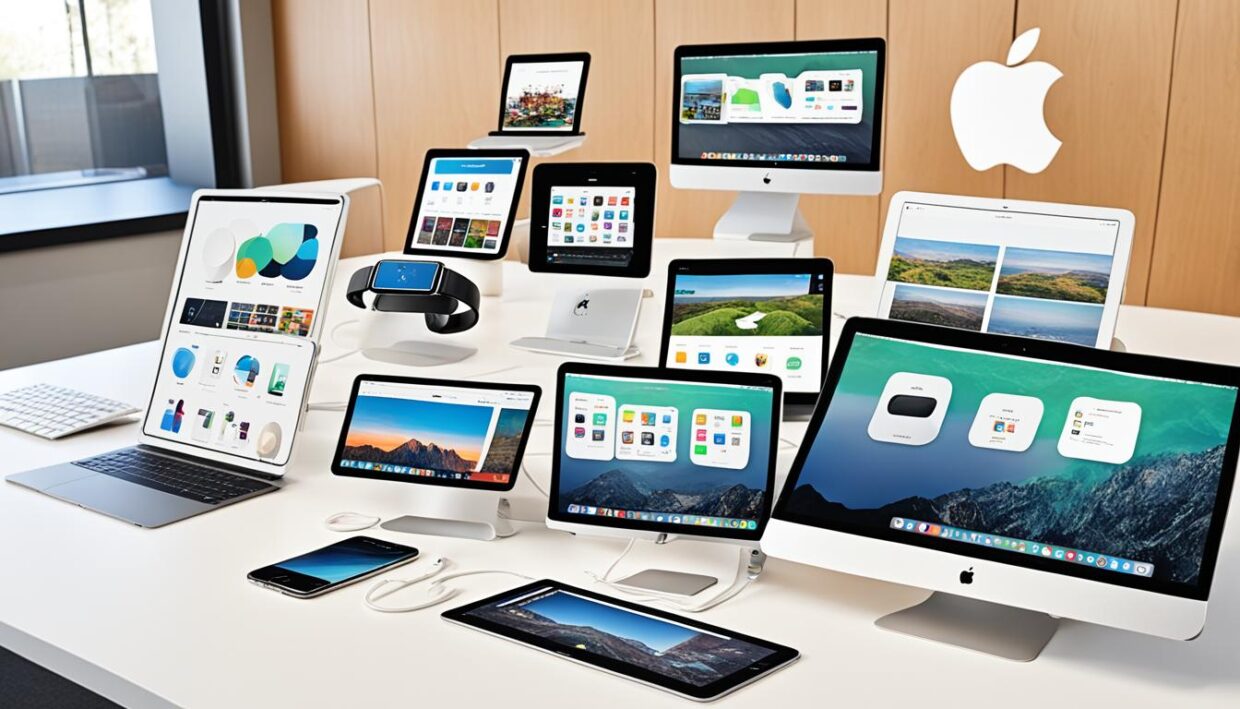
Xiaomi: The Rising Contender
Xiaomi continues to solidify its presence in the global smartphone market, showcasing impressive growth trends. With a remarkable 34% year-on-year increase in shipments, the company has shipped 41.5 million units, capturing a 14% market share. This progress is not merely a testament to effective marketing strategies but also highlights the compelling value offered by Xiaomi smartphones.
Growth in Market Share and Popularity
Xiaomi’s strategic pricing combined with high-quality features resonates well with consumers, leading to significant market growth. The competitive pricing of Xiaomi smartphones contributes to their popularity, allowing them to attract a diverse customer base seeking quality and performance without breaking the bank.
Key Features and Unique Selling Points
Xiaomi’s devices come packed with unique features that set them apart in a crowded marketplace. Here are some standout aspects:
- High-quality cameras that rival flagship models
- Powerful processors ensuring smooth performance
- Aggressive international marketing helping to build brand recognition
- Multiple sub-brands offering various models catering to different market segments
The brand’s flagship devices, such as the POCO series, exemplify its commitment to delivering premium specifications at competitive prices.
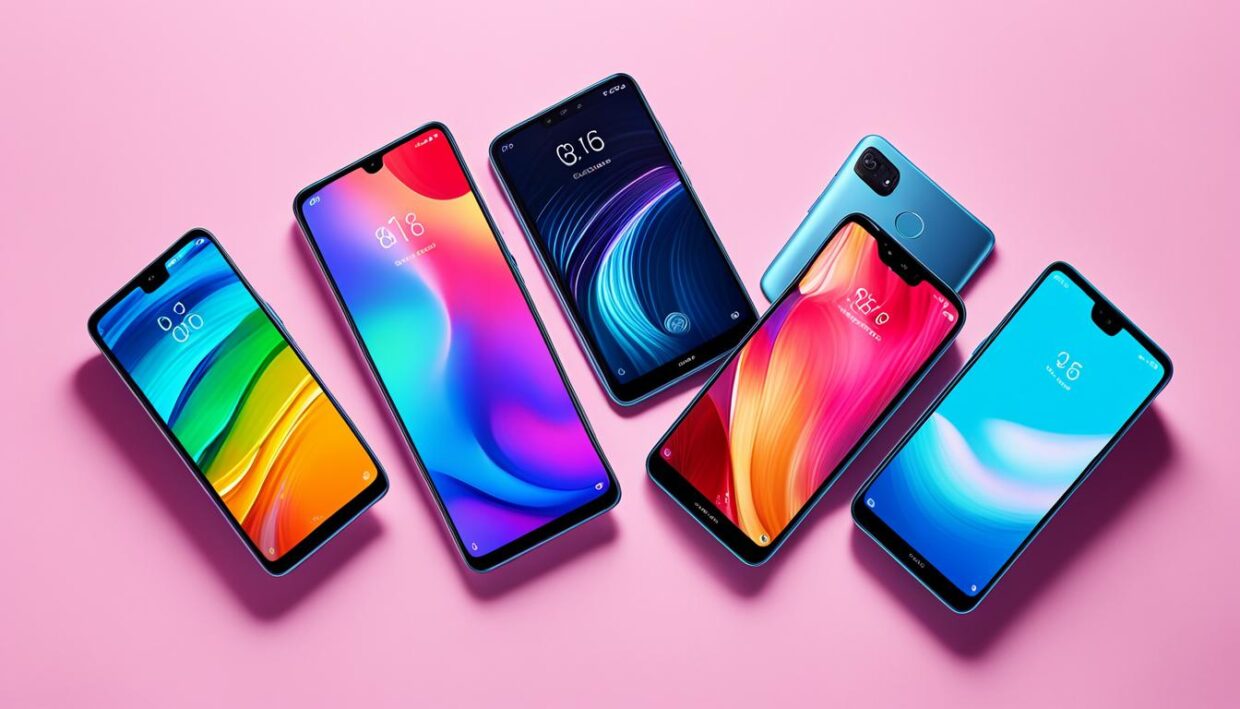
| Model | Display | Processor | Camera | Price |
|---|---|---|---|---|
| POCO F3 / Mi 11X | 120Hz | Snapdragon 870 | Flagship quality | $416 |
| POCO X3 GT | 120Hz | MediaTek Helio Dimensity 1100 | 64MP | $300 |
| POCO M4 Pro | 90Hz | Dimensity 810 | 50MP | $220 |
Xiaomi’s innovations, paired with its impressive market growth and emphasis on delivering unique features, have established it as a formidable player in the smartphone industry. Its ongoing commitment to enhancing user experience through technology positions Xiaomi for a strong future in the competitive landscape.
Oppo: A Competitive Force
Oppo smartphones have established themselves as formidable players in the competitive landscape of mobile technology. With an impressive market share of 8.7% in 2024, Oppo continues to carve out its niche through innovative technology advancements and a focused market strategy. The brand’s commitment to excellence is reflected in its workforce, comprising over 40,000 employees dedicated to pushing the boundaries of smartphone technology.
Recent Developments and Technology Advancements
The rapid evolution of Oppo smartphones has significantly impacted user experience and market dynamics. Noteworthy developments include:
- ColorOS: This operating system has streamlined functionality for over 600 million global users, enhancing usability and satisfaction.
- Intellectual Property: With more than 57,000 global patent applications, Oppo ranks among the leaders in innovative licenses, boasting a 91% proportion of applications for inventions.
- Manufacturing Excellence: With eight automated manufacturing centers worldwide, Oppo ensures high-quality production, meeting rigorous international standards.
- Recognition: The brand has received numerous awards for its exceptional technology, design, and branding in the highly competitive market.
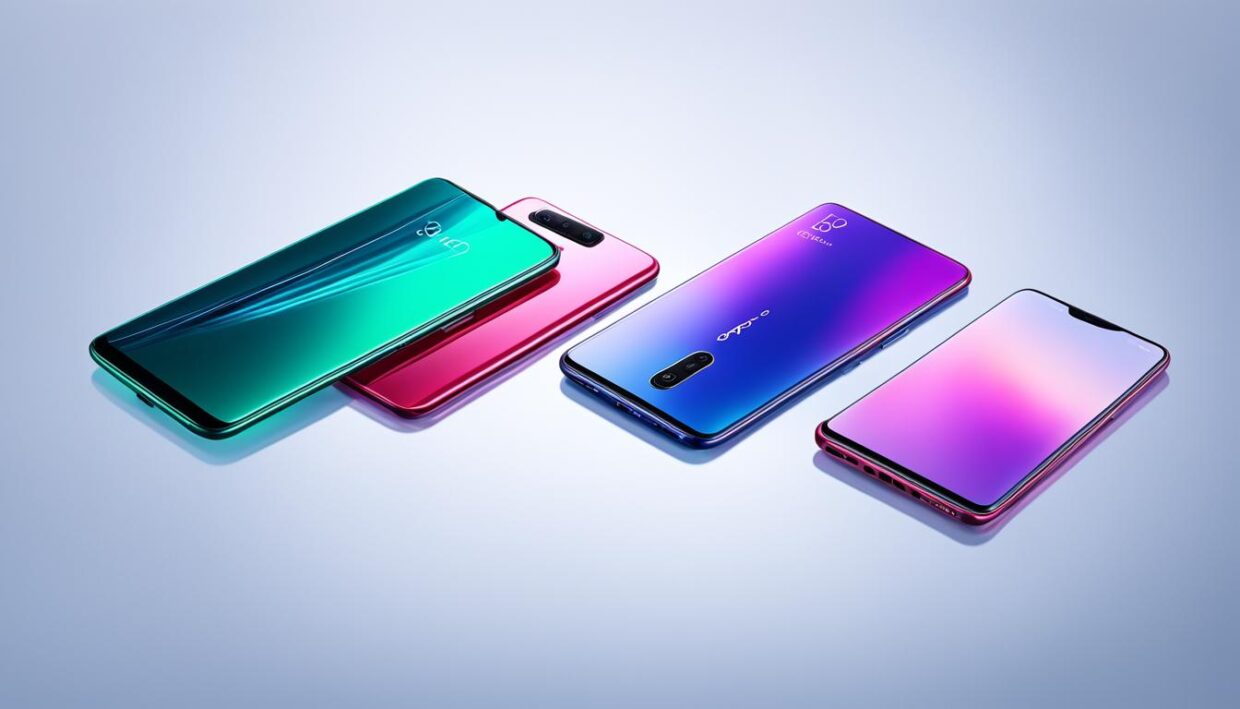
Innovation remains at the forefront of Oppo’s strategy. The company emphasizes unique designs and advanced features, such as rapid charging technology and high-resolution camera systems, which cater to both premium and budget consumer segments. As Oppo continues to push boundaries with its cutting-edge offerings, it maintains a strong position against its competitors, especially in key markets like China and India.
| Aspect | Details |
|---|---|
| Market Share (2024) | 8.7% |
| Employees | Over 40,000 |
| Global Patent Applications | More than 57,000 |
| Proportion of Invention Patents | 91% |
| Manufacturing Centers | 8 |
| Automation Rate | 85% |
| ColorOS Users | Over 600 million |
Vivo: Merging Performance with Affordability
Vivo smartphones continue to stand out in the competitive landscape by offering a blend of performance and affordability. As the brand gains traction in international markets, it focuses on delivering high-quality features while keeping prices accessible for consumers. Young users seeking value often find Vivo devices appealing due to their combination of advanced technology and reasonable pricing.
The company’s strategy has been particularly effective in the premium smartphone segment, where Vivo captured a notable 17% share in 2023, up from just 3% in 2020. This impressive growth underscores Vivo’s commitment to providing affordable devices that do not sacrifice performance. The premium segment, especially above the Rs 1 lakh price point, saw a significant year-on-year growth of 53%, signaling an increasing demand for smartphones that combine luxury with cost-effectiveness.
One of Vivo’s key strengths lies in its focus on camera capabilities and gaming performance. As these features become essential for consumers, Vivo has responded by integrating cutting-edge technology into its smartphones, ensuring that users receive top-tier performance in photography and gaming activities. This places Vivo smartphones as competitive options, particularly among tech-savvy younger consumers.
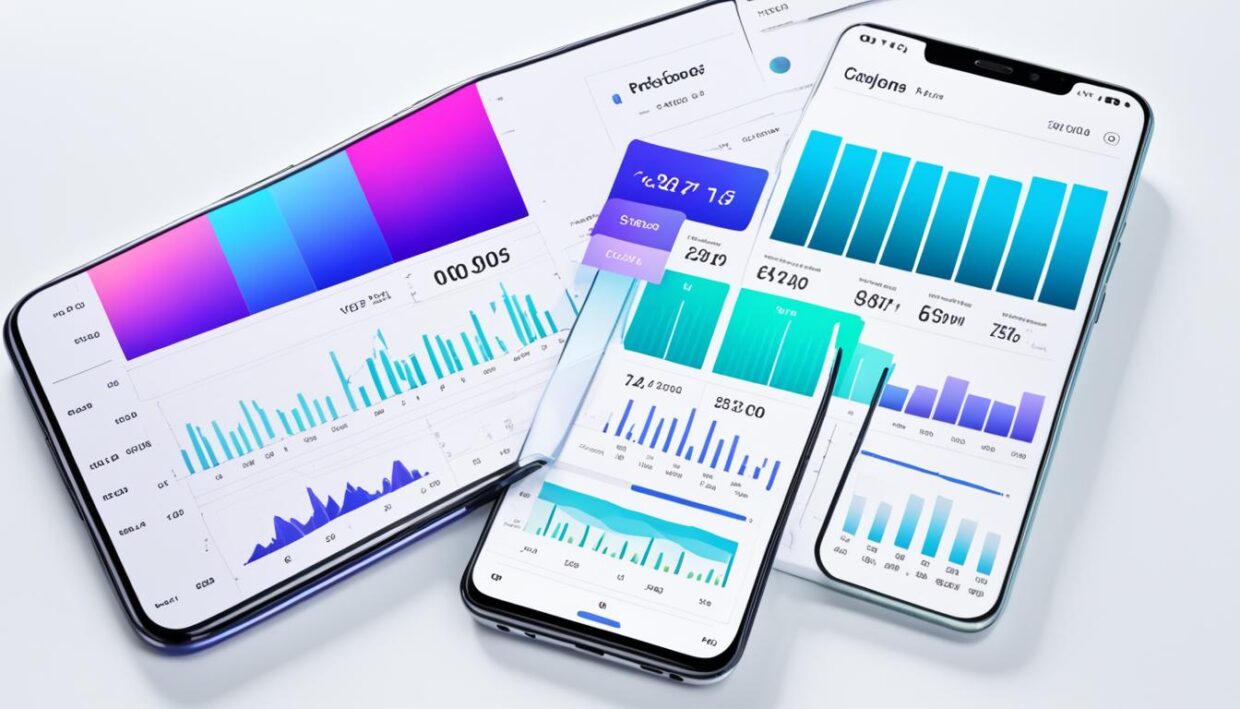
To further illustrate Vivo’s positioning in the market, the following table summarizes the premium segment landscape:
| Brand | Market Share (2023) | Performance Features | Price Segment |
|---|---|---|---|
| Vivo | 17% | Advanced camera, smooth gaming experience | Above Rs 30,000 |
| Apple | 20% | High-resolution camera, strong gaming performance | Above Rs 1 lakh |
| Samsung | 20% | Innovative camera technology, flagship performance | Above Rs 30,000 |
| Xiaomi | 13% | Good camera performance, gaming optimization | Mid-range |
| Oppo | 9% | Qualitative camera systems, competitive gaming specs | Mid-range to premium |
Through innovative designs and robust marketing strategies, Vivo smartphones clearly illustrate a commitment to enhancing user experience while maintaining affordability. This approach significantly resonates with emerging markets and is expected to shape Vivo’s role in the smartphone industry moving forward.
Huawei: Resurgence in the Mobile Market
Huawei’s comeback in the smartphone industry reflects its ability to navigate various market challenges while adapting to an ever-evolving landscape. The company’s response to the obstacles it faced showcases a remarkable determination and strategic vision.
Challenges Faced and Overcoming Obstacles
The geopolitical pressures and regulatory actions have significantly impacted Huawei’s operations, particularly in the international arena. Despite these difficulties, Huawei smartphones have managed to reclaim a substantial share of the Chinese market. Early 2024 saw Huawei’s sales skyrocket by nearly 70%, allowing it to capture 15.5% of China’s phone market. This resurgence places Huawei just behind Apple in a fiercely competitive environment.
Strategies for Global Market Recovery
Huawei’s recovery strategies involve a focus on innovative technology and an emphasis on quality. The launch of the Mate 60 Pro 5G, powered by the advanced Kirin 9000S processor, has been pivotal in this revitalization effort. By leveraging its technological advancements, Huawei aims to regain consumer trust while enhancing its standing in a market where domestic brands dominate.
As part of its strategic approach, Huawei has abstained from discounting its products amid supply shortages, unlike competitors such as Apple, who recently offered significant reductions ahead of festive seasons. This strategy signals confidence in its premium positioning within the market despite facing increasing competition.
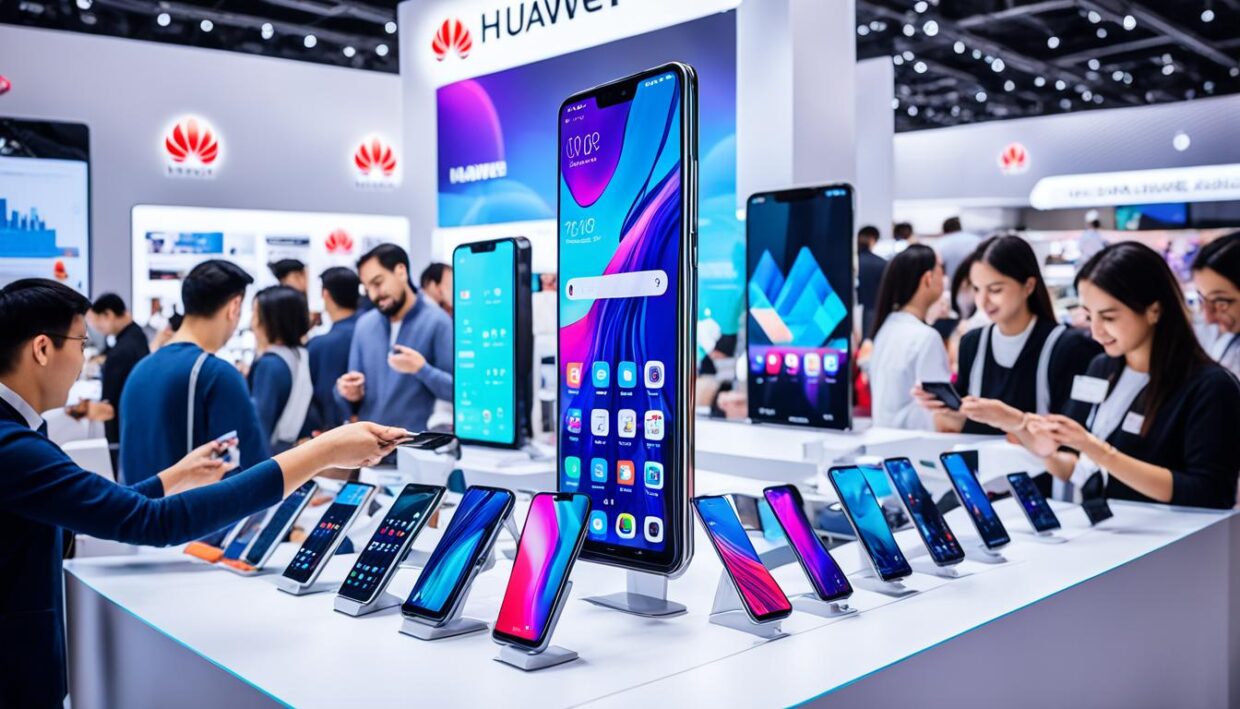
| Company | Market Share (2024) | Year-on-Year Sales Growth |
|---|---|---|
| Huawei | 15.5% | ~70% |
| Apple | 15.7% | -19% |
| Honor | 11.5% | +11.5% |
| Vivo | Position not reported | Position not reported |
With proactive market adaptation, Huawei continues to navigate through challenges successfully, setting the stage for its future endeavors in the global smartphone market.
OnePlus: The Flagship-Killer Brand
OnePlus has established itself as a formidable player in the smartphone market by delivering exceptional value through its flagship devices. This brand’s commitment to providing high specifications at competitive prices resonates well with evolving consumer trends. Amid rising demand for quality features without the high-end price tags common in the industry, OnePlus focuses on maintaining quality, ensuring their smartphones appeal to a broad audience.
Innovative Offerings and Consumer Reception
The latest iteration, the OnePlus 12, showcases a host of impressive attributes that underline the brand’s innovative approach. Featuring a stunning 6.82-inch LTPO AMOLED display with a resolution of 3168×1440, the device promises vibrant visuals and smooth performance. With an astounding 120Hz refresh rate and a peak brightness of 4,500 nits, the OnePlus 12 is optimized for an unparalleled viewing experience, making it a strong contender among flagship devices.
Under the hood, the OnePlus 12 runs on the Snapdragon 8 Gen 3 processor, boasting a 25% power boost and improved efficiency compared to its predecessor. Potential buyers can choose between 12GB and 16GB of memory, alongside storage options reaching up to 512GB. The camera setup is another highlight, featuring a 50MP primary lens equipped with Sony’s new LYT-808 sensor aimed at enhancing low-light photography. A 64MP telephoto lens offers 3x optical zoom, while the ultra-wide lens expands the creative potential even further.
OnePlus smartphones have consistently garnered positive consumer reception, thanks to their user-friendly OxygenOS 14, which enhances the Android experience. The impressive connectivity options, featuring Wi-Fi 7 and 5G capabilities, ensure users remain connected seamlessly. With an IP65 water resistance rating and advanced battery technology (a 5,400mAh battery with rapid 80W charging), the OnePlus 12 meets the practical needs of users.
Retailing at $799, the OnePlus 12 embodies the flagship-killer spirit that the brand is known for, proving that high-performing smartphones can be accessible. This strategy aligns perfectly with shifting consumer trends, where affordability coupled with premium specifications continues to attract a loyal customer base.
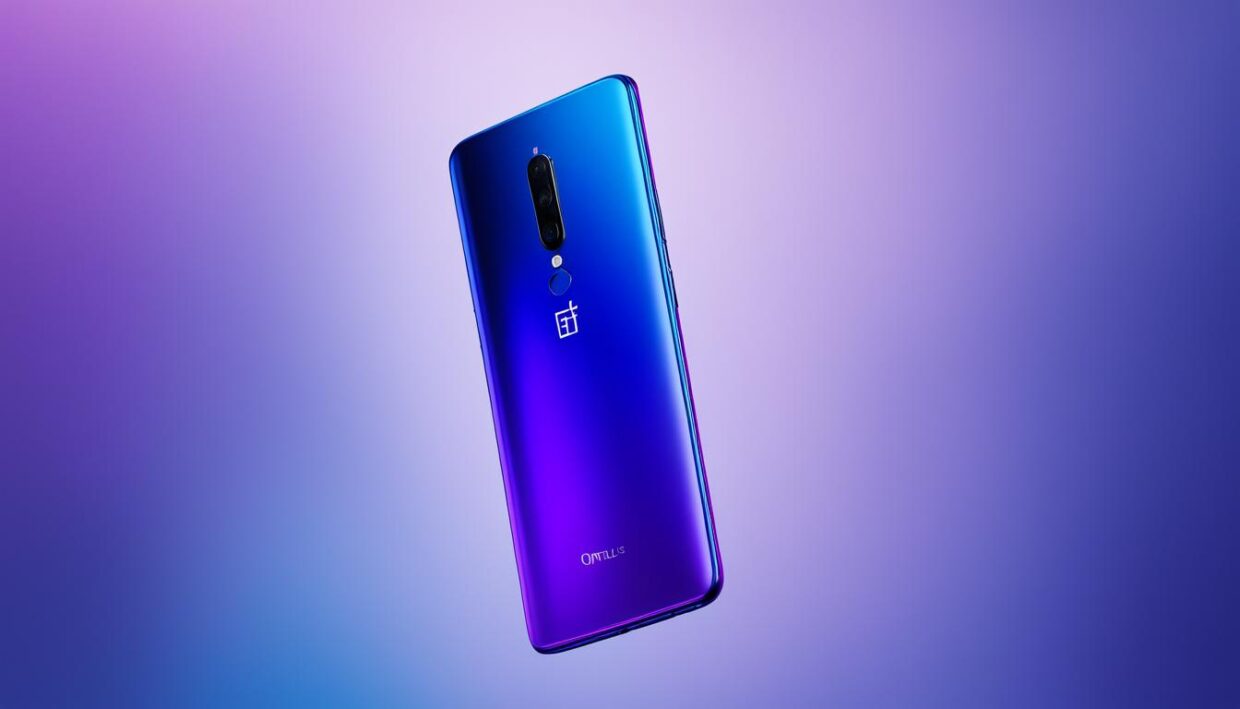
Motorola: A Historic Player’s Evolution
Motorola has long been recognized as a pioneer in the smartphone industry. The company’s rich history showcases dramatic phases of product evolution, from groundbreaking innovations to strategic market shifts. Following its founding in 1928, Motorola established significant milestones, such as developing the world’s first handheld mobile phone and the first commercial cellular device, which laid the foundation for modern smartphones.
New Products and Market Strategy
In recent years, Motorola smartphones have undergone impressive transformations that reflect the company’s commitment to innovation and adaptability. The introduction of cutting-edge features, such as modular phone design and support for 5G networks, demonstrates the brand’s alignment with current market demands. Their latest product lines, including the Moto Z and Moto G series, have received positive feedback, highlighting user experience and performance as core attributes.
Motorola’s market strategy aims to capture various demographics by leveraging its history while appealing to younger consumers. The brand employs a dual approach, focusing on both premium offerings like the Razr model and budget-friendly options to widen their customer base. This diversification contributes significantly to their evolving market presence, ensuring Motorola remains a relevant player amid fierce competition.
The following table summarizes key milestones in Motorola’s product evolution and market strategy:
| Year | Milestone |
|---|---|
| 1928 | Foundation of Motorola, Inc. |
| 1940 | Development of the first handheld walkie-talkie. |
| 1983 | Approval of the DynaTAC 8000X, the first commercial cellular device. |
| 2000s | Launch of the Razr smartphone, a best-seller. |
| 2011 | Split into Motorola Mobility and Motorola Solutions. |
| 2014 | Acquisition by Lenovo. |
| 2024 | Introduction of 5G capabilities and modular phone designs. |
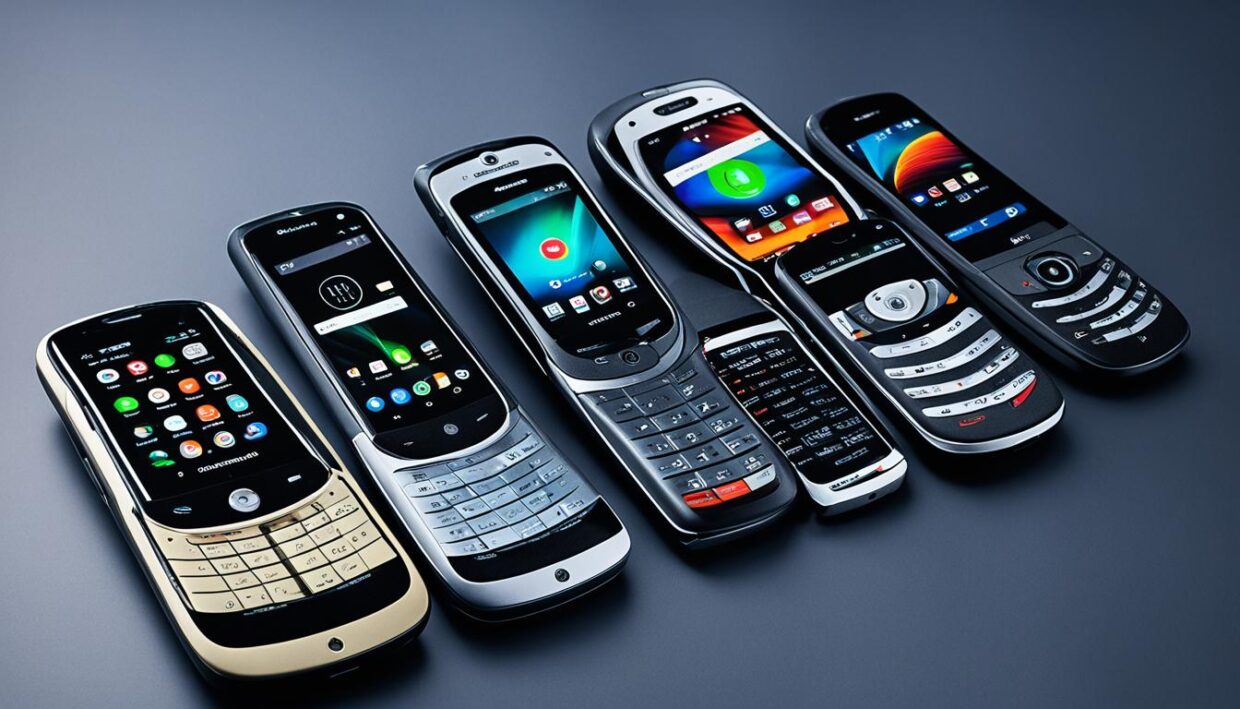
Google Pixel: The Software Powerhouse
Google Pixel smartphones stand out in the crowded Android market, primarily due to their exceptional software optimization. With a focus on blending hardware and software, Google has crafted devices that offer a seamless Android experience. The recently launched Pixel 8 and 8 Pro showcase this commitment, delivering impressive performance along with robust camera capabilities.
![]()
The Pixel 8 Pro features a 6.7-inch display, a powerful Tensor G3 chip, and a versatile rear camera setup that includes a 50MP main lens, a 48MP telephoto lens with 5X optical zoom, and a 48MP ultra-wide lens. Weighing 213g and with dimensions of 162.6 x 76.5 x 8.8mm, this smartphone supports storage options up to 1TB, making it a formidable choice for power users.
On the other hand, the Pixel 8 offers a slightly smaller 6.2-inch OLED display, with a dual-camera configuration consisting of a 50MP main camera and a 12MP ultra-wide lens. This model weighs 187g and is structured to cater to everyday tasks while ensuring an enjoyable Android experience.
Another notable addition to their lineup is the Pixel Fold, which combines innovation with functionality. Launched in June 2023, it introduces a 7.6-inch flexible display and innovative software features tailored for a foldable format. This expands the possibilities of the Android ecosystem, encouraging new ways to interact with apps.
The best budget option, the Pixel 8a, embodies the value of Google Pixel smartphones. This device boasts a 6.1-inch display, a 64MP wide rear camera, and up to 1,400 nits brightness, while still maintaining a compact design at just 188g. With guaranteed software updates for years, it remains an attractive choice for consumers looking for quality without breaking the bank.
Google’s commitment to software longevity is evident across its devices. The Pixel 8 series promises an industry-leading seven years of software and security updates. This strong support framework enhances the Android experience, allowing users to enjoy the latest features without the concern of obsolescence.
Top Mobile Brands Reshaping Consumer Technology
As consumer technology trends evolve, leading smartphone companies respond to changing smartphone preferences by introducing innovative features and adjusting their market strategies. The demand for advanced camera systems and unique form factors, such as foldable devices, has influenced the development of new products across the industry. Brands are focusing on enhancing user experiences while aligning their offerings with anticipated future outlooks in technology.
Market Trends and Consumer Preferences
The smartphone market is witnessing a shift, with consumers prioritizing functionality over aesthetics. For instance, research indicates that half of U.S. consumers are interested in purchasing foldable phones, making Samsung’s Galaxy Z series increasingly relevant. This trend points to a growing acceptance of innovative design combined with cutting-edge technology. Over 63% of Samsung users exhibit brand loyalty, demonstrating a preference for devices that offer a blend of reliability and innovation.
Future Outlook for Leading Brands
Looking ahead, the global smartphone market is expected to reach $0.5 trillion by 2024, with a compounded annual growth rate of 3.4% projected from 2024 to 2028. Major players like Samsung, Xiaomi, and others are anticipated to continue adapting their strategies to meet consumer demands. As smartphone preferences evolve, companies are likely to integrate artificial intelligence and enhance security features, ensuring they remain competitive while fostering customer satisfaction.
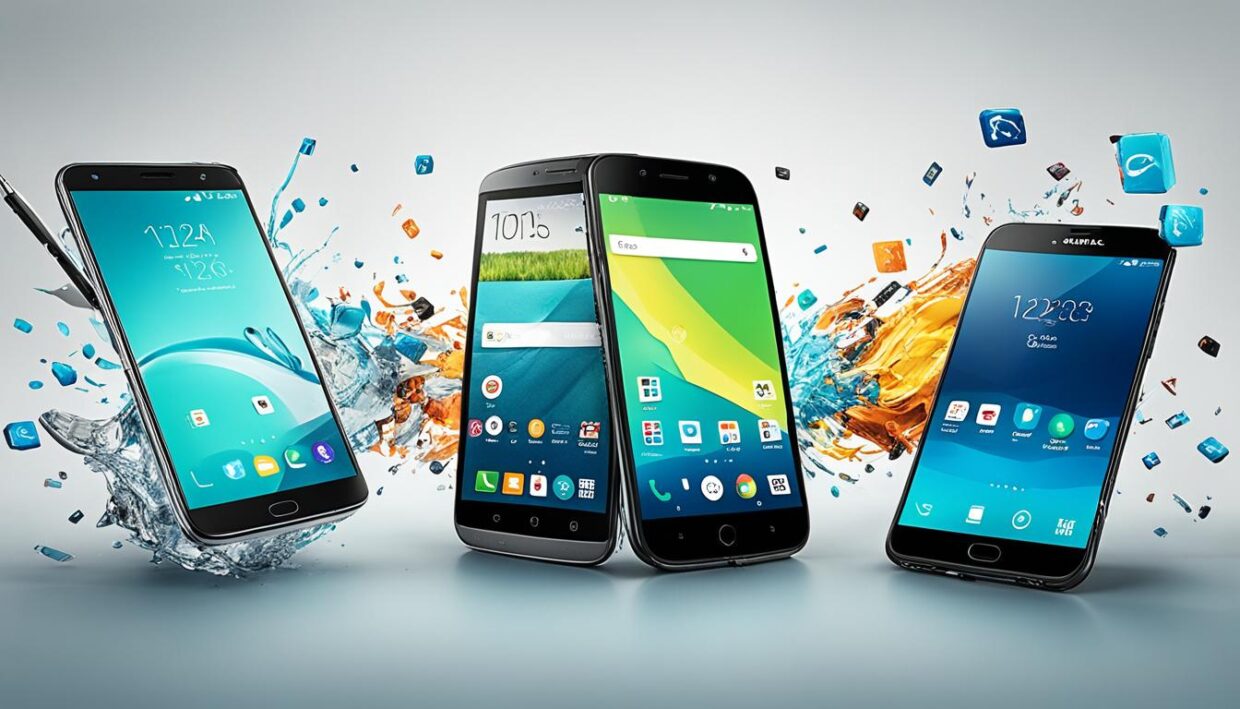
Comparative Analysis of Flagship Models
The flagship smartphone comparison reveals significant differences in performance specifications and camera capabilities across various brands. This analysis highlights both user experience and technical advancements that each model presents, allowing consumers to make well-informed choices based on their preferences.
Performance Specifications and User Experience
Examining the performance analysis of leading smartphones, important metrics like processor capability and battery life stand out. The iPhone 15 Pro Max, weighing 221g and featuring dimensions of 159.9 x 76.7 x 8.25mm, runs on the powerful A17 Pro processor. In terms of display, the 6.1-inch OLED screen showcases a 120Hz refresh rate, appealing to users who prioritize smooth visuals.
Switching to the Samsung Galaxy S24 Plus, it employs the Snapdragon 8 Gen 3 processor and comes equipped with a 4,900mAh battery. This configuration supports 45W fast charging and ensures that users maintain productivity throughout the day. The combination of high performance and longevity positions it as a strong competitor.
For gamers, the Asus ROG Phone 8 Pro stands out, providing exceptional framerrates and features that optimize gaming performance. Meanwhile, the OnePlus 12R excels in battery life, being recognized for lasting longer than any tested device in recent years.
Camera Technology Innovations
The Samsung Galaxy S24 Ultra is touted for its versatile camera capabilities, including features that specifically enhance photography, such as moon and food photography. The innovation in the camera technology encourages creative expression among users, offering a range of functionality suited for various photography styles.
In comparison, the iPhone 15 Pro Max integrates a 5X zoom lens that enhances its photographic prowess, appealing to photography enthusiasts. The Google Pixel 8 Pro stands out as the best AI phone, showcasing advanced camera capabilities powered by Google’s latest software innovations.
This comparative analysis not only highlights flagship smartphone capabilities but also underscores what sets these premium devices apart in terms of user experience and technical mastery.
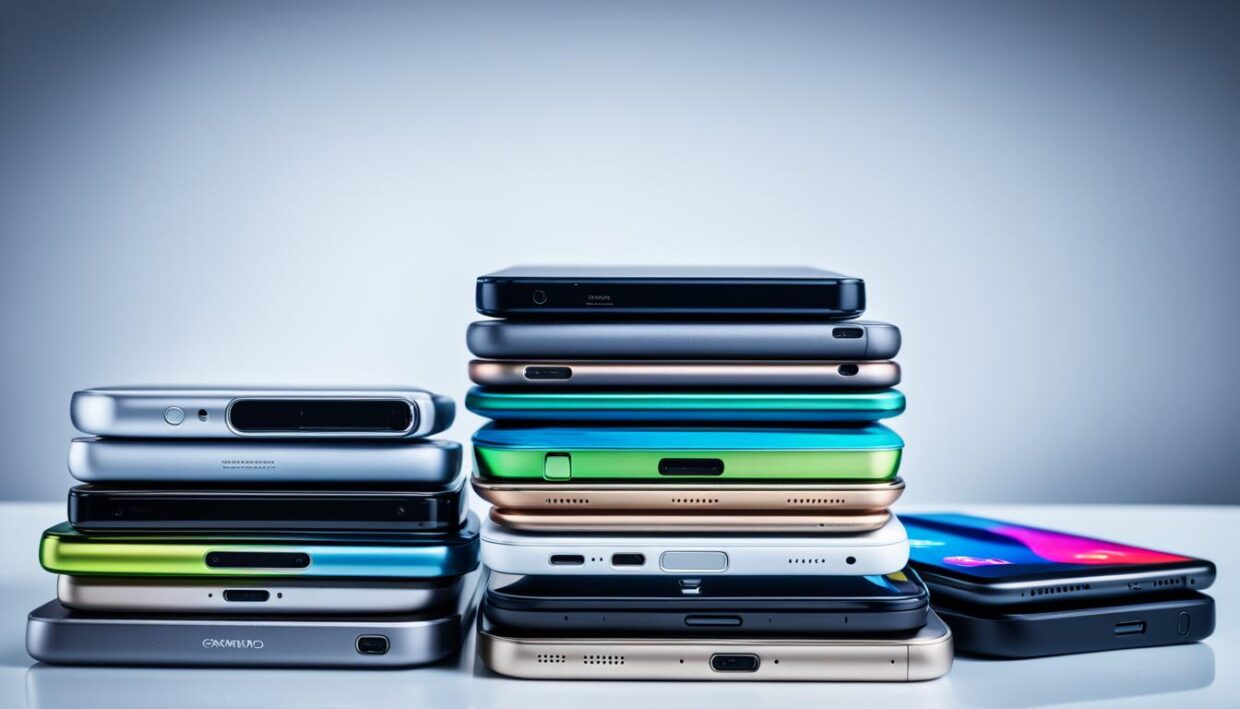
Budget-Friendly Options Among Top Brands
Finding budget smartphones that meet essential needs without overspending is increasingly feasible in today’s market. Many reputable brands offer affordable models with features that rival more expensive counterparts. Typically, budget-friendly phones are those priced around $500 or under, providing significant value offerings compared to earlier generations.
When selecting a budget smartphone, users often focus on important aspects such as software support, display quality, and storage capacity. Strong software backing, including consistent OS upgrades for a minimum of two years and three years of security updates, is crucial. Additionally, having a good screen enhances user experience; OLED displays, for instance, deliver superior color and contrast compared to LCDs, ideally offering a resolution of at least 1080p.
Storage options also play a vital role in the selection process. Prospective buyers generally prefer devices with at least 64GB of internal storage, ideally expandable via a MicroSD card, or a minimum of 128GB built-in to accommodate an increasing amount of photos, videos, and apps.
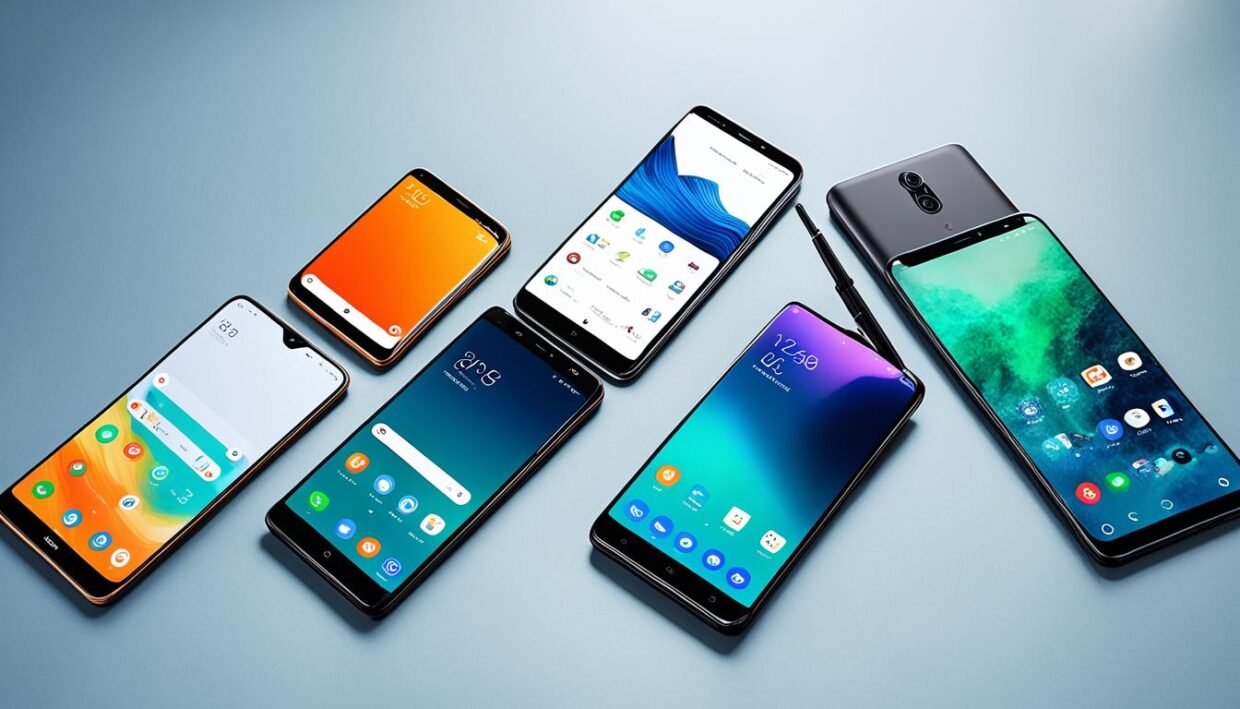
While budget smartphones might forgo some advanced features, they still provide solid camera performance suitable for everyday conditions. Here is a comparison table of some popular budget models:
| Smartphone Model | Price | Screen Size | Processor | Battery |
|---|---|---|---|---|
| Samsung Galaxy A15 5G | $157.87 | 6.5 inches | Exynos | 5,000mAh |
| Google Pixel 6A | $310 | 6.1 inches | Tensor | 4,306mAh |
| OnePlus Nord N30 5G | $249.99 | 6.72 inches | Snapdragon | 5,000mAh |
| Motorola Moto G Power 5G (2024) | $299.99 | 6.6 inches | Dimensity | 5,000mAh |
| Apple iPhone SE (2022) | $429 | 4.7 inches | A15 Bionic | 1,821mAh |
| Google Pixel 8A | $499 | 6.1 inches | Tensory G3 | 4,492mAh |
These examples illustrate that value offerings are not limited by price, as each model maintains solid performance and essential features in an accessible budget. With advancements in mobile technology, consumers can enjoy an array of budget smartphones that cater to their needs without compromising quality.
Challenges and Competition in the Smartphone Industry
The smartphone competition is more intense than ever, as manufacturers navigate an array of industry challenges. Supply chain disruptions, evolving regulatory landscapes, and shifting consumer preferences are just a few hurdles manufacturers face when trying to maintain a competitive edge.
Technological advancements demand constant innovation. Companies must invest significantly in research and development to keep pace with consumer expectations for high-performance devices. Furthermore, sustainability trends influence purchasing decisions, leading brands to adapt their production processes and materials to meet eco-friendly standards.
To thrive in this competitive environment, brands are employing various market adaptation strategies. Collaborative partnerships, streamlined operations, and market diversification are essential for businesses aiming to capture new customer segments and maintain their market positions.

| Brand | Q1 2024 Units Sold | Market Share (%) | Year-on-Year Change (%) |
|---|---|---|---|
| Samsung | 60.1 million | 20.8 | – |
| Apple | 50.1 million | – | -9.6 |
| Xiaomi, Transsion, Oppo | 94.5 million | 32.7 | + |
As these dynamics unfold, companies remain committed to understanding market trends, which is critical in adapting to consumer needs and addressing industry challenges effectively. The ability to pivot in response to changing consumer expectations will ultimately determine the success of leading smartphone brands in a continually evolving landscape.
The Future of Smartphone Technology
The landscape of future smartphone technology promises exciting advancements that could redefine user experiences. With smartphone shipments demonstrating a significant decline, where numbers fell by more than 18% during the 2022 holiday season compared to the previous year, manufacturers are now pivoting towards upcoming trends that cater to evolving consumer demands.
One of the most prominent innovations lies in the affordability of premium devices. Smartphones priced at $300 or $400 are now equipped with impressive features that challenge higher-end models. This trend allows a wider audience to access high-quality devices, fostering a more inclusive market.
- Increased repairability trends appear to support a burgeoning market for used and refurbished devices.
- Enhanced displays and pixel density are set to elevate visual experiences in future smartphones.
- Advancements in power management technologies promise better battery life and performance.
Though foldable smartphones currently hold a niche market due to cost and bulkiness, their potential is not to be underestimated. With unique designs and flexible displays, they may gain traction as production costs decline. Encrypted connections between chips, CPUs, and graphics cores are being developed to enhance data security and authenticity.
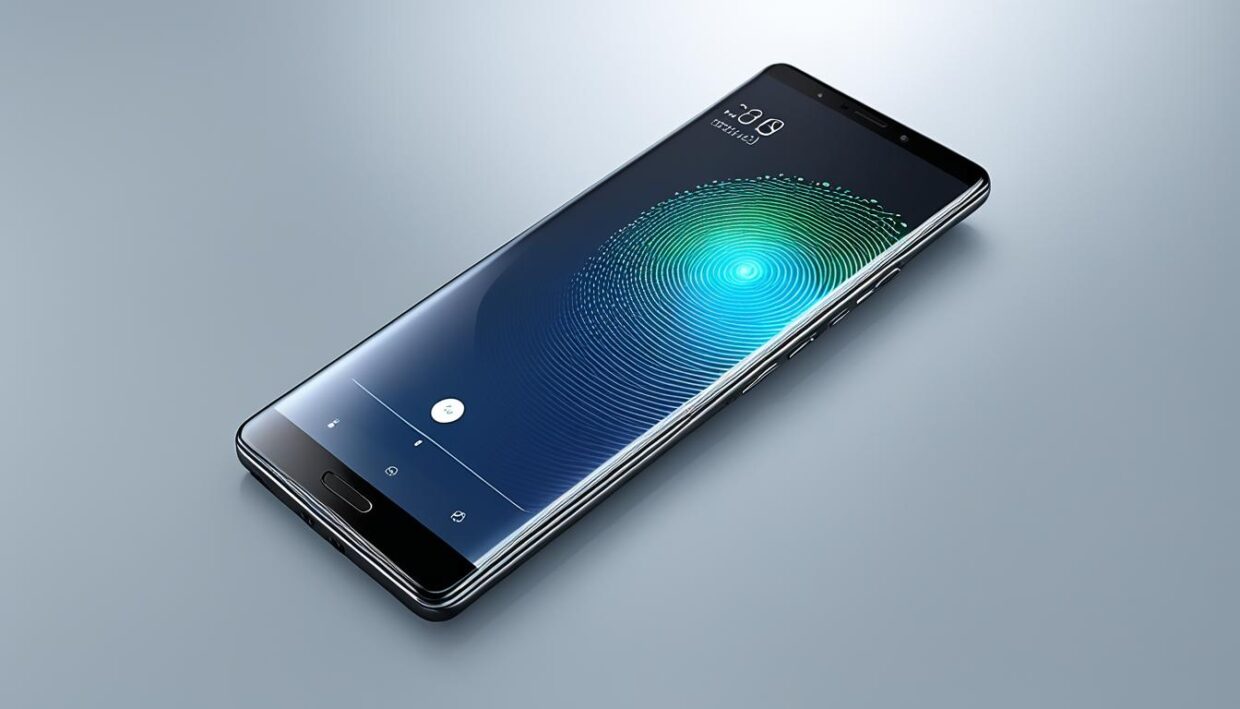
Wearable devices, such as smart glasses, signal a shift towards distributed experiences that might lessen smartphone dependency. Innovations may allow smartphones to act as hubs, connecting various devices to the internet while executing local AI processing. Despite current sales trends not reaching previous heights, opportunities persist in emerging markets, especially in underserved regions like Africa and in light of India’s expanding 5G network.
The environmental impact of smartphone production leads to increasing consumer interest in eco-conscious devices like Ecophone. Expectations for smartphone design include a persistence of the classic candy bar shape and a rise in foldable designs. Manufacturers are prioritizing modular phone concepts and upgradable components, such as improved cameras, which align with the increasing demand for sustainability in the industry.
Conclusion
In this smartphone market recap, we have explored the pivotal roles played by leading brands in shaping the landscape of mobile technology. As of 2024, Samsung and Apple remain at the forefront of innovation, continually pushing the boundaries of smart devices to satisfy consumer demands. Huawei, OnePlus, and Xiaomi have also carved out significant positions, each leveraging unique strengths to compete effectively within the industry.
The integration of 5G technology has ushered in a new era, providing users with faster downloads and enhanced connectivity. Such advancements highlight the importance of continuous innovation across all brands, including newcomers like Oppo and Vivo, which are making strides through innovative design and camera capabilities. This leading brands summary illustrates a vibrant and competitive market where each player is vying to engage diverse consumer segments.
Looking forward, the industry outlook is promising as brands navigate shifts in consumer preferences, emphasizing sustainability and eco-friendly practices. With annual model releases and various enhancements, understanding performance metrics will empower consumers to make informed choices in this evolving landscape. The smartphone industry remains a dynamic field, driven by creativity and technology, that promises further excitement in the years to come.




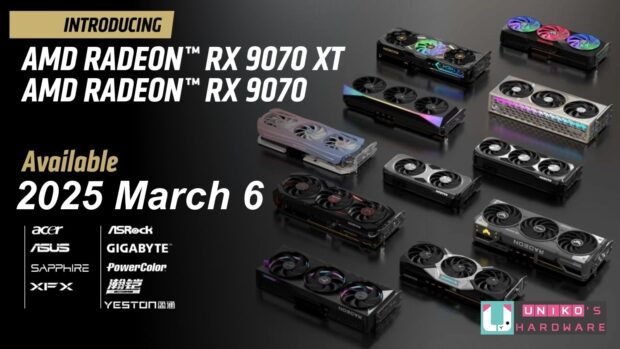















Be the first to leave a comment